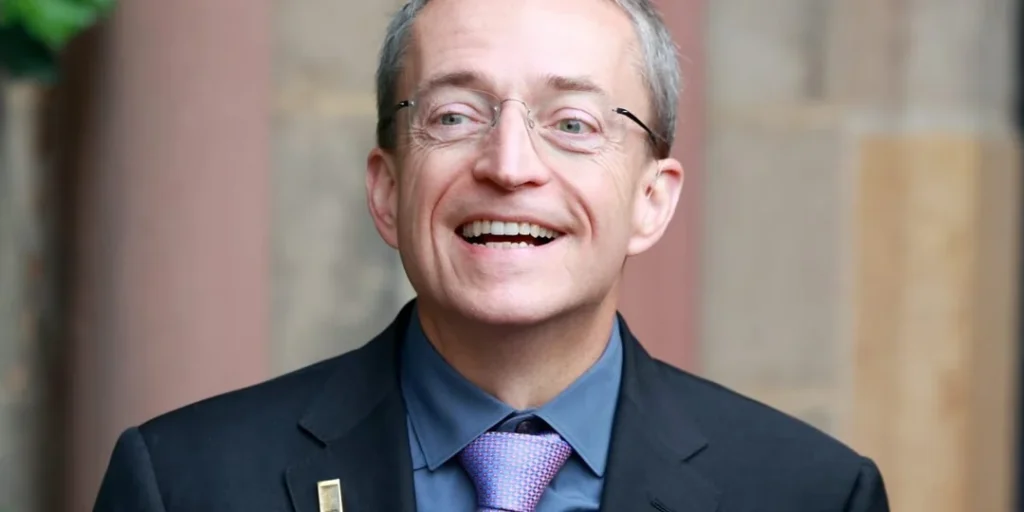
Intel CEO
Table of Contents
In a shocking turn of events, intel ceo Pat Gelsinger has been forced out of his position less than four years after taking the helm of the company. The news comes as Intel struggles to regain its lead in the fast-paced chipmaking industry, where it once held a dominant position.
Gelsinger, 63, had announced his turnaround plan in July 2021, aiming to restore Intel’s manufacturing competitiveness and build capabilities to be a world-class foundry. However, despite significant investments and efforts, the company has not seen the desired results.
The board of directors, feeling that Gelsinger’s plan was not working fast enough, decided to hand control over to two lieutenants as the company searches for a permanent replacement. This decision comes at a time when Intel is facing intense competition from Taiwan Semiconductor Manufacturing Co (TSMC), which makes chips for rival companies like Nvidia.
Under Gelsinger’s leadership, Intel has seen its market value decline by more than 30 times compared to Nvidia, the leader in artificial intelligence chips. The company’s shares have lost over half of their value this year, and it was recently replaced by Nvidia on the blue-chip Dow Jones Industrial Average index.
Gelsinger had assured investors and U.S. officials that his manufacturing plans remained on track, but the full results will not be known until next year, when Intel aims to bring a flagship laptop chip back into its own factories. Despite this, shares rose 4.1% following the news of Gelsinger’s departure.
The company has named Chief Financial Officer David Zinsner and senior executive Michelle Johnston Holthaus as interim co-chief executive officers while its board conducts a search for a new CEO. The moves come less than a week after U.S. officials gave $7.86 billion in subsidies to Intel.
“We have made significant progress in regaining manufacturing competitiveness and building the capabilities to be a world-class foundry, but we know that we have much more work to do at the company and are committed to restoring investor confidence,” said Frank Yeary, independent chair of the board.
Gelsinger’s departure marks a significant setback for Intel, which has been struggling to regain its footing in the rapidly changing chipmaking industry. The company’s failure to field an effective AI chip challenger to Nvidia has also been criticized by analysts, with some questioning whether Gelsinger’s major strategic decisions are still relevant.
“The stock lost more than 60% under his tenure, so this shouldn’t have come as a very big surprise,” said Ryan Detrick, chief market strategist for investment advisory firm Carson Group. “New leadership is needed to turn things around and it is safe to say that any of his major strategic decisions are on the chopping board, including the move to focus on being a contract manufacturer.”
Gelsinger’s plan centered on Intel becoming a major player in contract manufacturing for others, a business model called a “foundry” in the chip industry. However, despite announcing a handful of foundry customers such as Microsoft and Amazon.com, neither would bring to Intel’s factories the huge volumes of chips needed to ensure the factories’ profitability.
Intel’s foundry ambitions falter as Gelsinger’s turnaround plan struggles
Gelsinger’s departure also marks the end of an era for Intel, which was once a dominant player in the chipmaking industry. The company’s struggles have been well-documented, with years of missteps in its manufacturing operations leading to significant losses and a decline in its market value.
In recent months, Intel has been trying to turn things around through a series of investments and strategic moves. However, despite these efforts, the company remains stuck in neutral, struggling to regain its footing in the rapidly changing chipmaking industry.
As the search for a new CEO begins, analysts are eagerly watching to see what changes will be made at Intel. Will the company stick with Gelsinger’s foundry model or explore other options? Only time will tell.
In the meantime, shares of Intel have risen on the news of Gelsinger’s departure, sparking hopes that the company can finally turn things around. However, as analysts point out, new leadership is needed to restore investor confidence and drive the company forward.
The future of Intel remains uncertain, but one thing is clear: the chipmaking industry will continue to evolve rapidly, with companies like Nvidia leading the charge. As Intel searches for a new CEO, it will be watching these developments closely, hoping to stay ahead in the game.
The Road Ahead (Intel CEO)
For Intel, the road ahead will be challenging. The company must navigate a complex and competitive landscape, where technology is advancing at a breakneck pace. However, despite the challenges, there are still opportunities for growth and innovation.
As the search for a new CEO begins, Intel will need to focus on several key areas. First and foremost, it needs to restore its manufacturing competitiveness, building capabilities that can keep up with the latest technological advancements.
Secondly, Intel must explore new business models and partnerships that can drive growth and profitability. The company’s foundry model has been criticized for not being scalable enough, so it will need to think outside the box to stay ahead.
Finally, Intel needs to invest in its workforce and talent pool, attracting top talent from around the world. As the chipmaking industry continues to evolve, companies that can adapt quickly will be the ones that thrive.
In conclusion, Pat Gelsinger’s departure marks a significant turning point for Intel. The company must now navigate uncharted territory, focusing on restoring its manufacturing competitiveness and exploring new business models and partnerships.
While the road ahead will be challenging, there are still opportunities for growth and innovation. As Intel searches for a new CEO, it will be watching these developments closely, hoping to stay ahead in the game.
Source Intel CEO
Dailyread Intel CEO

Pingback: Openai Sora: The best of No. 1 AI Video Generation